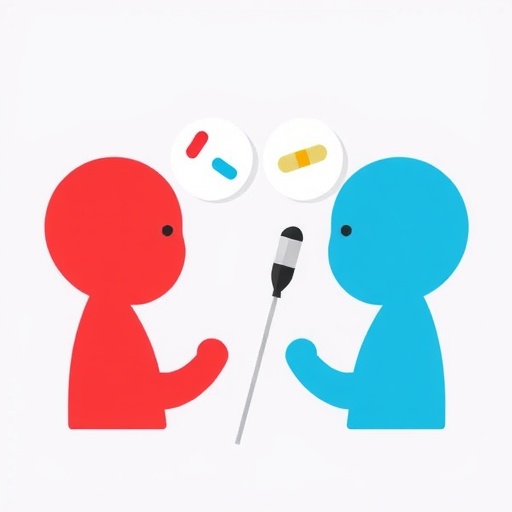The recent paper by Fisher, Winger, Samsa, et al. has sparked an engaging conversation within both the psychological and medical communities, as it examines the nuanced similarities and key distinctions between drug interventions and behavioral interventions in treatment development. This valuable exploration is emblematic of a critical time in psychology and psychiatry, where the integration of biological science and behavioral approaches is enhancing our understanding of mental health treatment efficacy.
The crux of the paper highlights how drug interventions, often seen through the lens of pharmacological efficacy, must increasingly consider the interplay with behavioral strategies. For many years, pharmacological treatments have dominated clinical psychology, often sidelining the essential role that behavioral interventions play in successful patient outcomes. Behavioral interventions, grounded in psychological principles and social context considerations, can significantly alter the effectiveness of pharmacological treatments.
One of the most compelling aspects of the study is the authors’ insight into how traditional paradigms in the treatment landscape often assume a linear causality, neglecting the interplay of multiple factors influencing patient response. Both drug and behavioral interventions can affect neurobiological mechanisms; understanding these mechanisms offers a path toward more integrated treatment protocols that reduce patient burden and increase satisfaction. Importantly, the authors advocate for a more holistic perspective in treatment development that considers not just biological underpinnings, but the complex reality of patient experiences.
The paper delves into the methodologies employed in assessing both types of interventions. Randomized controlled trials (RCTs) remain the gold standard in drug studies, establishing robust protocols for quantitative analysis of neurochemical impacts on health outcomes. In contrast, while behavioral interventions have seen progress in rigorous empirical study, they often rely on qualitative approaches that embrace the richness of human experience. This distinction is crucial, as it suggests that while both intervention types can be effective, they operate within very different frameworks that can obscure their combined potential.
Equally important is the authors’ emphasis on patient engagement, showcasing how the therapeutic alliance formed through behavioral interventions can significantly enhance the effectiveness of pharmacological therapies. They argue that drug developers should not only focus on the biochemical basis of their products but also take into account how these drugs will be received in conjunction with behavioral therapeutic techniques. A better relationship between patient and provider, fostered through behavioral engagement, may lead to improved adherence to pharmacological treatment regimens.
Moreover, the authors examine the economic implications of integrating drug and behavioral interventions. They make a case for how a more cost-effective treatment protocol can emerge when both approaches are harmonized to meet the needs of patients. Reducing reliance on pharmaceuticals alone can lead to lower healthcare costs and minimize the often detrimental side effects associated with long-term drug use. Consequently, this necessitates further research into developing integrated treatment plans that prioritize both psychological and biological approaches.
The intersection of drug and behavioral interventions also prompted a recognition of the ethical considerations surrounding these treatment modalities. The authors highlight instances where the prioritization of pharmaceutical solutions has led to questions about informed consent and the authenticity of patient choices. Behavioral interventions, by empowering patients to take an active role in their treatment plans, could not only alleviate ethical concerns but also foster a new sense of agency among patients.
The exploration of similarities and distinctions between these two intervention types also raises interesting questions about future research trajectories. The authors advocate for a new wave of interdisciplinary collaboration that transcends traditional silos in the fields of clinical psychology and psychopharmacology. They highlight how this collaboration could lead to the development of innovative therapies that harness the best of both worlds—pharmaceutical efficacy coupled with behavioral responsiveness.
Among the paper’s most hopeful notions is that future treatment development could be characterized by an increased fluidity between drug and behavioral approaches. Rather than viewing these modalities as opposing forces, the authors propose a synthesis that allows for more personalized and contextual treatment strategies. With advancements in technology and data analytics, healthcare professionals can more easily track patient responses and utilize that feedback to tailor treatment strategies that are uniquely suited to each individual’s needs.
In regard to broader societal implications, the authors posit that advancing our understanding of drug and behavioral intervention development may improve access to effective mental health care for underrepresented populations. By dismantling the view that one field must prevail over the other, the authors encourage a cultural shift in how mental health interventions are conceived, developed, and applied. This may ultimately promote a more equitable model of care that appreciates the diverse experiences of individuals seeking help.
The insights presented in this paper by Fisher and colleagues resonate deeply within the ongoing dialogue about what constitutes effective mental health care. The complex interplay between pharmacological and behavioral interventions not only reflects an evolving understanding of human health but also emphasizes the necessity for comprehensive care that considers biological, psychological, and social dimensions. As we advance toward an era of precision medicine, this study serves as a pivotal reminder that holistic approaches can lead us closer to truly integrated treatment paradigms.
In conclusion, Fisher, Winger, Samsa, et al.’s exploration of drug and behavioral intervention development illuminates the promising potential of combined therapeutic strategies. Their work lays a foundation for future research and dialogues about optimizing patient care, fostering a greater understanding of interventions that simultaneously address the biological and behavioral facets of health. This synergistic approach may ultimately lead to transformative changes in how we view and approach mental health treatment, paving the way for enhanced patient outcomes and satisfaction.
Subject of Research: The similarities and distinctions between drug and behavioral intervention development.
Article Title: Similarities and important distinctions between drug and behavioral intervention development.
Article References:
Fisher, H.M., Winger, J.G., Samsa, G.P. et al. Similarities and important distinctions between drug and behavioral intervention development.
Discov Psychol 5, 26 (2025). https://doi.org/10.1007/s44202-025-00352-5
Image Credits: AI Generated
DOI: 10.1007/s44202-025-00352-5
Keywords: drug interventions, behavioral interventions, treatment development, pharmacological efficacy, patient engagement




